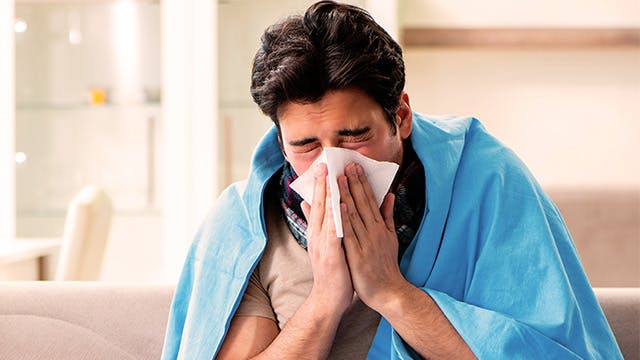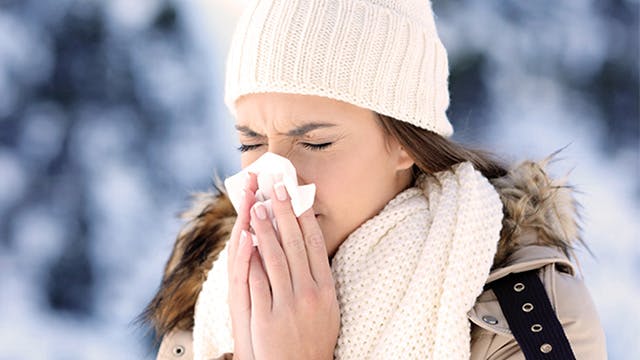When is the peak of flu season?
Of course, every season plays out differently but, typically, the peak of cold and flu season is between December and February. In fact, according to the CDC, during a 36-year period dating back to 1982 to 2018, February was the peak month of flu activity during 15 seasons.1
The Flu and COVID-19
Because the flu virus will still be spreading during the same seasons that COVID-19 is spreading, the CDC suggests that everyone older than 6 months get an annual flu vaccine.2 It is possible to have the flu and COVID-19 at the same time.2 The symptoms are similar for both of them, it is recommended that you get tested to determine which virus you have. If you do have COVID-19, you should wait until it’s safe for you to come out of isolation before you get the flu vaccine.2
The flu vaccine doesn’t prevent you from getting COVID-19, and it also doesn’t increase your risk in getting COVID-19.2

Because the flu virus will still be spreading during the same seasons that COVID-19 is spreading, the CDC suggests that everyone older than 6 months get an annual flu vaccine.2
When does flu season end?
Usually, flu season lasts for about 12 weeks according to experts. But that can vary quite a bit, depending on where a person lives and how many strains are circulating. In the United States, the flu season can last through May.1
Every year, the Centers for Disease Control and Prevention works with local health departments in major cities and at the state-level to track how the flu spreads.1 In this process, the CDC tracks when and where cases of the flu appear, when they increase and decrease, what strains are spreading, and the number of hospitalizations and deaths caused by complications with the flu.1
Ways to prepare for cold and flu season
- Consider getting a flu shot because the CDC says it reduces the risk of getting sick by 50%
- Wash your hands frequently as germs can live on everything you touch. Washing your hands, and using hand sanitizer in the moments where you can’t clean your hands will lower your risk of getting a cold or flu.
- Minimize contact with sick people and keep your distance from those coughing or sneezing
- Stock up on Theraflu over-the-counter cold and flu medicines
- Keep an eye on the activity in your area with the Theraflu Cold and Flu Tracker
- Consult with your doctor about which flu vaccine is best for you.
For the 2021 cold and flu season, there are three main flu vaccines available—IIV, RIV4, and LAIV4.2 If you consult with the physician or pharmacist that’s administering your vaccine, there are additional options for vaccines with a higher dosage, egg-free vaccines, and even a vaccine that is given through nasal spray.2 - Check the Centers for Disease Control and Prevention for the latest strains of the flu in your area.
The flu virus can change constantly and without notice. Your local health care facility might also be able to provide any updated information on new strains of vaccines as well as any increases or decreases on how it’s spreading in your area. - Eat healthy and stay hydrated
A healthy diet can lower your risks of getting sick in the winter. Staying hydrated can reduce congestion in your nose and chest. Getting the proper nutrients can strengthen your immune system as well. - Avoid touching your face.
Germs spread easily, so you should avoid touching your mouth, nose, and eyes. If someone coughs or sneezes, the particles can remain in the air and on surfaces.2 If you touch an infected item or stay in an infected area, you increase your risk in getting a cold or flu. - Stay well rested
Getting sleep is important because it helps your immune system stay strong and fight off viruses properly.
If you do feel sick, monitor your symptoms early on so that you can relieve them as soon as possible. Learn the early signs of a cold or flu so that you can reduce the chances of you spreading it to others if you do have it.
Wash your hands frequently as germs can live on everything you touch. Washing your hands, and using hand sanitizer in the moments where you can’t clean your hands will lower your risk of getting a cold or flu.




